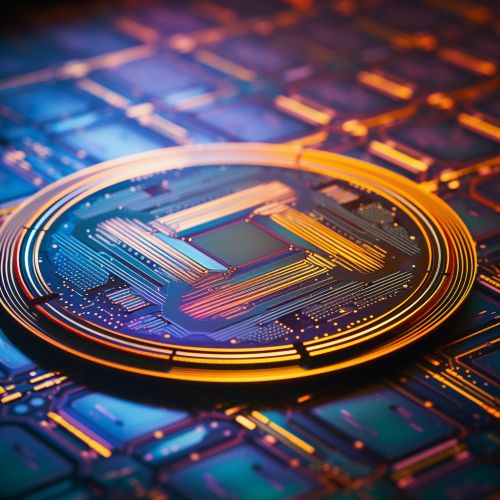Silicon
Overview
Silicon is a chemical element with the symbol Si and atomic number 14. It is a hard, brittle crystalline solid with a blue-grey metallic lustre, and is a tetravalent metalloid and semiconductor. It is a member of group 14 in the periodic table: carbon is above it; and germanium, tin, and lead are below it. It is relatively unreactive. Because of its high chemical affinity for oxygen, it was not until 1823 that Jöns Jakob Berzelius was able to prepare pure silicon, which is the second most abundant element in the Earth's crust, after oxygen.


Characteristics
Silicon is a metalloid: it has properties of both metals and non-metals. It is a semiconductor, meaning that it does conduct electricity unlike a full conductor, but does so under special circumstances. This physical property makes silicon an important material in electronics, where it is used to create complex integrated circuits, or "chips". Silicon is also a strong and hard material, although it is brittle and prone to shattering.
Occurrence and Production
Silicon is the second most abundant element in the Earth's crust, about 28% by mass. It occurs primarily in the form of silicon dioxide, or silica, and silicates. Silica occurs in many crystalline forms, the most common of which is quartz. Silicates are complex compounds that contain silicon, oxygen, and one or more metals, and they form the majority of the Earth's rocks.
Silicon is produced commercially by the reduction of silicon dioxide with carbon in an electric arc furnace, in a process known as the Carbothermic process. The resulting silicon is metallurgical grade silicon (MG-Si). It can be further refined to semiconductor grade silicon by the Siemens process, which involves additional purifications using the trichlorosilane (SiHCl3).
Applications
Silicon's properties make it a crucial element in electronics, where it is used to create complex integrated circuits, or "chips". This application consumes a large portion of the silicon produced each year. Silicon is also used as an important part of many alloys, and in the production of silicones, a family of synthetic substances made of silicon, oxygen, carbon and hydrogen, which are used in a wide range of applications from sealants and adhesives to lubricants and cooking utensils.
In addition, silicon has a variety of uses in construction and civil engineering. For example, silicones are used in waterproofing treatments, molding compounds and mold-release agents, mechanical seals, high temperature greases and waxes, and caulking compounds. Silicon is also used in solar panels, where it is used to convert light energy into electrical energy.
Health and Safety
Silicon is generally considered to be safe, but it can be a serious health hazard when inhaled. Long-term exposure to crystalline silica dust can lead to a debilitating lung disease known as silicosis. Silicon dust can also be a hazard in the workplace, where it can cause respiratory problems if not properly controlled.
